Wind energy converters are being subject to recurrent test cycles in order to detect damages at an early stage and thus to guarantee their safe operation. The inspection intervals and the scope of inspection result from the specifications of the respective individual and type testing, the regulations of the official authorisation, the requirements related to financial and insurance issues. Extended test methods permit more detailed statements concerning the condition of single main components.
Commissioning inspections, end of warranty inspections, court appraisals respectively the subject the topic continued operation can be at the heart of these examinations. We dispose of the right resources to meet all requirements.
For the inspections, our eight experts at different locations are at your disposal. Through our network consisting of five offices, we dispose of 21 experts which are located throughout Germany.
In addition to operators, our customers are authorities, manufacturers of wind energy converters, insurers, financing banks as well as courts.
Depending on requirements, our inspections are carried out according to the following regulations:
- Principles for the “Recurring Periodic Inspection of Wind Turbine Generator Systems of BWE e. V. (German Wind Energy Association)
- Principles for the “Condition oriented inspection of Wind Turbine Generator Systems of BWE e. V. (German Wind Energy Association)
- Guideline for wind energy converters – impacts and verifications of stability of tower and foundation”, German Institute for Structural Engineering (DIBt)
- DIN EN 61400 “Wind Energy Converters”
- DIN EN 50308 „Wind Energy Converters, protective measures, requirements for design, operation and maintenance
- Type testing and related expert opinions regarding safety devices, rotor blades, machinery components, operating instructions, etc.
- Turbine specification, maintenance manual, on-site documentation of WEC
- Ground assessment
- Turbulence report (for the commissioning inspections and the continued operation after 20 years)
- Inspection reports of previous inspections for compliance check of the requirements, log book, etc.
- Principles for the implementation of an Evaluation and Assessment with Regard to the Extended Operation of Wind Energy Plants of BWE e. V. (German Wind Energy Association)
- Principles for the DNV GL guideline “Lifetime extension of wind turbines“, Germanischer Lloyd
- Regulations of the German Social Accident Insurance (DGUV)
- Ordinance on Industrial Safety and Health (BetrSichV)
- Ordinance on workplaces (ArbStättV)
- [Commissioning inspections of wind energy converters]
- [End of warranty inspection]
- [Periodic inspections]
- [Condition-oriented inspection]
- [Rotor blade inspection]
- [Continued operation]
- [Alignment of the drive train and the machine]
- [Vibration analysis]
- [Video endoscopy of gearbox]
- [Inspection in accordance with “DGUV Regulation 3” ]
- [Factory acceptance test]
- [Damage and court appraisals]
- [Due-Diligence inspection]
- [Inspection Offshore]
[Commissioning inspections of wind energy converters]
 Functional safety after the trial operation
Functional safety after the trial operation
Commissioning operations are carried out in order to verify that the contractual obligations and official requirements with respect to the technical aspects are fulfilled. The functions of the WEC including the safety systems are thoroughly examined. This examination also concerns the compliance of the WEC with the documentation for foundation, tower, screw connections, machinery components including the gearbox, welded seams of supporting structures as well as safety-related devices. Existing defects impeding the acceptance or a safe operation are uncovered. The results are documented in a detailed report.
[End of warranty inspection]
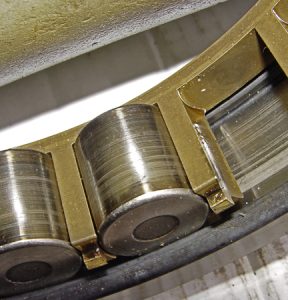 economically important
economically important
With the expiration of the warranty, as contracted with the manufacturer, the risk of damages to the WEC passes over to the operator. If defects prior to the end of warranty are not notified to the manufacturer of the WEC, the operator loses his rightful claim for paid reparations. The following documentation respectively. components are thoroughly examined for identifying deficiencies: documentation of the WEC as well as proofs of maintenance, foundation, tower, machine frame, spot-checks of important screw connections, all mechanical and electrical components, drive train and, where appropriate, measurements, video endoscopy of the gearbox plus vibration measurements, check and functional tests of all safety-relevant components, rotor blade inspection – exterior and interior (where accessible). If needed, the scope of inspections can be extended to include further components. The defects are summarized in a detailed report. This report serves the client as a document for claiming reparations from the manufacturer.
[Periodic inspections]
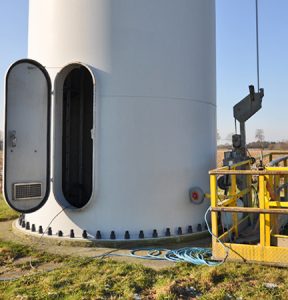 Control of stability, function and safety
Control of stability, function and safety
The technical condition of the WEC is not only interesting for the operators. Wind energy converters in Germany are subject to periodic inspections due to requirements of authorities, financing banks, insurers etc. The periodic inspection focuses on the important safety aspects. The inspection serves to establish that no endangerment arises from the machine, neither from the standpoint of structural stability nor from the sequence of operations. To complement this, the electrical components including the lightning conducting path, the safety chain and the rotor blades are inspected. Parts and components are checked with reference to the condition and proper functioning. Maintenance and repair works according to the documentation in the maintenance manual are checked, as well as the compliance of the wind energy converter with its documentation regarding foundation, tower, screw connections, machinery components including gearbox, welded seams of supporting structures as well as safety-relevant devices.
[Condition-oriented inspection]
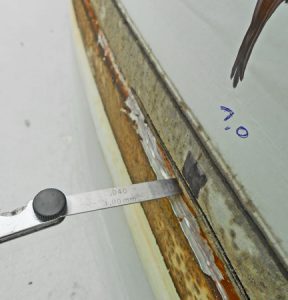 Operational safety by current insights
Operational safety by current insights
An extensive inspection of the wind energy converter may become necessary due to high performance, frequent damages, the sale of the turbine, change of the insurance company and / or of the maintenance company (end / beginning of the full maintenance contract). This objective is achieved by the condition-oriented inspection. Aim of this inspection is the discovery of initial defects to prevent consequential damages, the inspection of the entire drivetrain via video endoscopy and vibration analysis as well as the inspection of the rotor blades – in short, the determination of the current technical condition of the turbine. Condition-oriented inspections include the scope of the periodic inspection. The inspection is carried out in accordance with the “Principles for the Condition oriented inspection of Wind Turbine Generator Systems of BWE e. V. (German Wind Energy Association). The customer ultimately defines the precise scope of inspection.
[Rotor blade inspection]
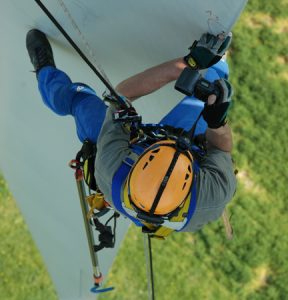 Maximum yield via detailed inspection
Maximum yield via detailed inspection
Intact rotor blades are essential for the reliable operation of the turbine. The quality of the production process is a decisive factor for the aerodynamic characteristics as well as for the downtime. Thus, damages have a direct influence on the yield of the turbine and therefore on the profitability of the investment. The rotor blade inspection is carried out from the immediate proximity by using rope technique respectively a lifting platform. The scope of inspection includes the condition of the rotor blades (crack formation, cavities, delamination etc.), the function of the drainage hole and the lightning protection, if necessary, the function of the tip mechanics, the condition and completeness of the flow elements and conspicuous operating noises. The control of the blade interior is restricted to the accessible area. Defects are documented. The report contains a statement if there are safety-related concerns which could prevent the continued operation.
[Continued operation]
 the operation must not end after 20 years
the operation must not end after 20 years
The operating time of wind energy converters (WEC) depend on the design lifetime of its respective type / individual approval, in most cases 20 years. Lifetime extension of the WEC beyond the design lifetime is possible as long as in the course of an assessment and verification of the lifetime extension (EAW) the evidence that the required conditions are met can be provided. This takes place with the following procedure consisting of an analytical and a practical part. The analytical part serves for the determination of the lifetime extension period. The practical part is similar to a periodic inspection in scope with detailed analyses of the thematic complex “fatigue”. The subject of the EAW is therefore an individual analysis of the possible risks that arise with the continued operation of the WEC considering the operating period and the site conditions.
[Alignment of the drive train and the machine]
 optimum alignment for optimum performance
optimum alignment for optimum performance
A misalignment of the generator or the gearbox is often the source of bearing and follow-on damages to the components of the drivetrain which can result in costly repairs and lengthy downtimes. An early detection of excessive tolerances and their elimination prevent damages to the coupling and also bearing damages to the generator and/or gearbox. The inspection of the gearbox and the generator alignment is done by means of a measurement laser, which documents any eventual divergence. A detailed report is the result of the measurement and serves as a guide for the correction in case of a misalignment.
[Vibration analysis]
 identify invisible irregularities at an early stage in order to avoid consequential damages
identify invisible irregularities at an early stage in order to avoid consequential damages
The technical condition of the roller bearings and the toothing of the whole drivetrain (main bearing, gearbox, generator) can be detected by means of a vibration analysis and evaluation of the data. By this means, invisible areas are examined and evaluated. Thus, irregularities are identified at an early stage and cost-intensive consequential damages can be avoided. The evaluation is carried out by our own experienced diagnostic technicians. By means of a vibration analysis, imbalances, misalignments, colliding loose particles, fitting problems or shaft damages, local and circular irregularities at the toothing and the roller bearings can be detected. The vibration analysis ideally complements the video endoscopy of the gearbox. The results are summarized in a diagnostic report containing recommendations for additional necessary measures.
[Video endoscopy of gearbox]
 for a predictable maintenance
for a predictable maintenance
Damages to the gearbox can lead to expensive repairs and long downtimes. The gearbox is inspected with extreme care by means of a video endoscopy to detect toothing and bearing damages . Years of experience and always with state of the art inspection and documentation technology are the basis for a well-founded result. In order to determine the cause of the damages, the video endoscopy can be complemented by further methods like, e. g. tooth imprints followed by a SEM (scanning electron microscope) inspection, laser-based measurement of the alignment, vibration analysis, materials investigation, metallographic inspections etc. The results of the video endoscopy are summarized in a detailed report.
[Inspection in accordance with “DGUV Regulation 3” ]
 safety by means of the inspection of electrical components
safety by means of the inspection of electrical components
According to §5 of the DGUV (German Social Accident Insurance) regulation 3, the operator has to ensure that electrical installations and equipment have to be checked in terms of their proper condition prior to the first commissioning, the re-commissioning after a change or repair work and also within certain intervals. For operators, this inspection is of great importance in many respects. By this inspection they meet the requirements defined by the Trade Supervisory Offices, the Employer’s Liability Insurance Associations respectively by the insurance companies. All relevant operating resources are subject to individual inspections. The operating material is checked by means of a visual inspection regarding damages respectively improper usage by functional tests and by the performance of prescribed measurements. For the electrical inspection, calibrated measuring instruments are used only. The results of the inspection are listed in a detailed inspection report.
[Factory acceptance test]
 our know-how ex factory
our know-how ex factory
With increasing plant sizes, the factory acceptance test of turbine components like towers, rotor blades, rotor bearings, gearboxes etc. becomes an increasingly important issue. The control of the manufacturing and the subsequent acceptance test of the components directly ex factory help to avoid failures prior to the construction and commissioning of a wind turbine and thus, to prevent extensive repair works or exchange measures leading to long downtimes.
[Damage and court appraisals]
 recognised expertise – neutral and independent
recognised expertise – neutral and independent
The extent of possible „special damages“ range from gearbox damages through lightning damages of rotor blades to the case of an average, in which the entire nacelle is burnt down. For the investigation of damage causes and for the clarification of questions of the players involved, we inspect the “special damage” on basis of our long-term experience. For the clarification of questions in special cases as in those of fire, external experts are brought in. For the investigation of damage causes and of materials testing like, for example, a broken gear-tooth in the gearbox, testing laboratories or qualified institutes are consulted; these have at their disposal the respective special installations and the adequate testing systems.
[Due-Diligence inspection]
 Safety through technical expertise
Safety through technical expertise
In the course of wind farm projects, the contractual object is extensively inspected prior to acquisition in order to carry out a solid evaluation of the investment risks (due diligence test). The legal, tax and financial due diligence is carried out by external specialists which act as technical consultants to windexperts. As a notified body, windexperts carries out the inspection of the turbine and writes up the “technical due diligence report”. The focus of this inspection is the identification and evaluation of technical strengths and weaknesses of the whole project and the opportunities and risks resulting hereof considering the entire lifetime.
[Inspection Offshore]
 special demands on the logistics services and the team
special demands on the logistics services and the team
The experts of windexperts are familiar with the technology used for offshore installations through their previous work. Since 2005 windexperts has offered the entire performance spectrum taking into account the special circumstances at sea. Special safety trainings, a good mental and physical stress resistance as well as our efficient logistics are the keys to meet the preconditions for a safe and efficient inspection. We can carry out the inspections of offshore wind farms by several experts which leads to reduced costs concerning downtimes as well as passages. If inspections of offshore foundations are desired or needed, we offer our cooperation with experienced and well-trained service companies.


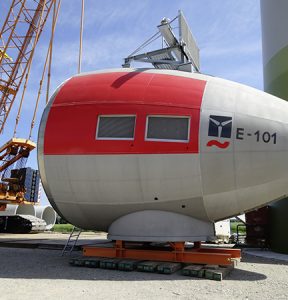 Functional safety after the trial operation
Functional safety after the trial operation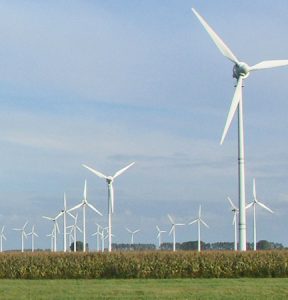 the operation must not end after 20 years
the operation must not end after 20 years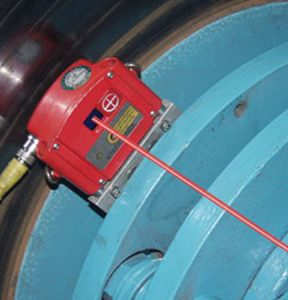 optimum alignment for optimum performance
optimum alignment for optimum performance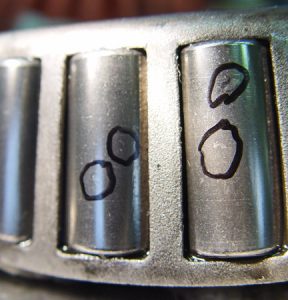 identify invisible irregularities at an early stage in order to avoid consequential damages
identify invisible irregularities at an early stage in order to avoid consequential damages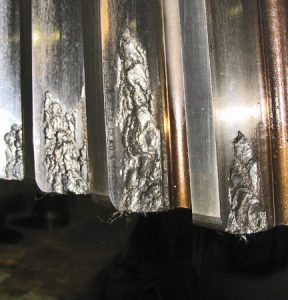 for a predictable maintenance
for a predictable maintenance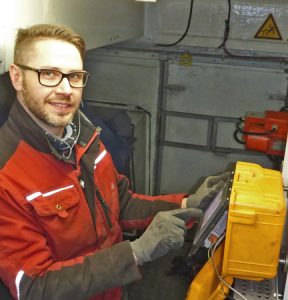 safety by means of the inspection of electrical components
safety by means of the inspection of electrical components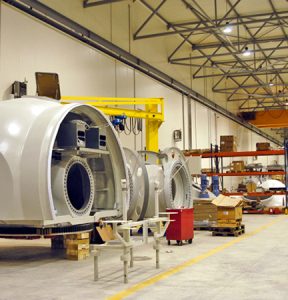 our know-how ex factory
our know-how ex factory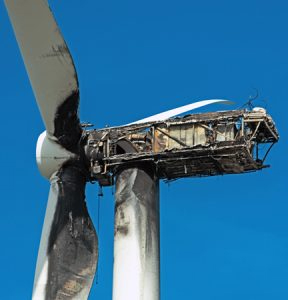 recognised expertise – neutral and independent
recognised expertise – neutral and independent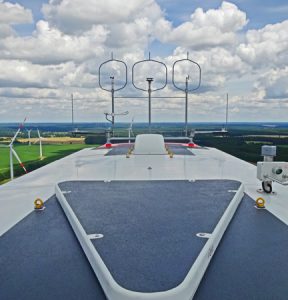 Safety through technical expertise
Safety through technical expertise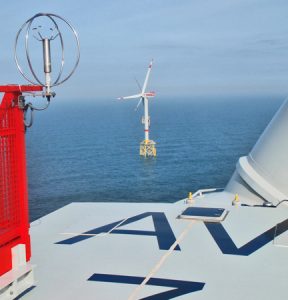 special demands on the logistics services and the team
special demands on the logistics services and the team